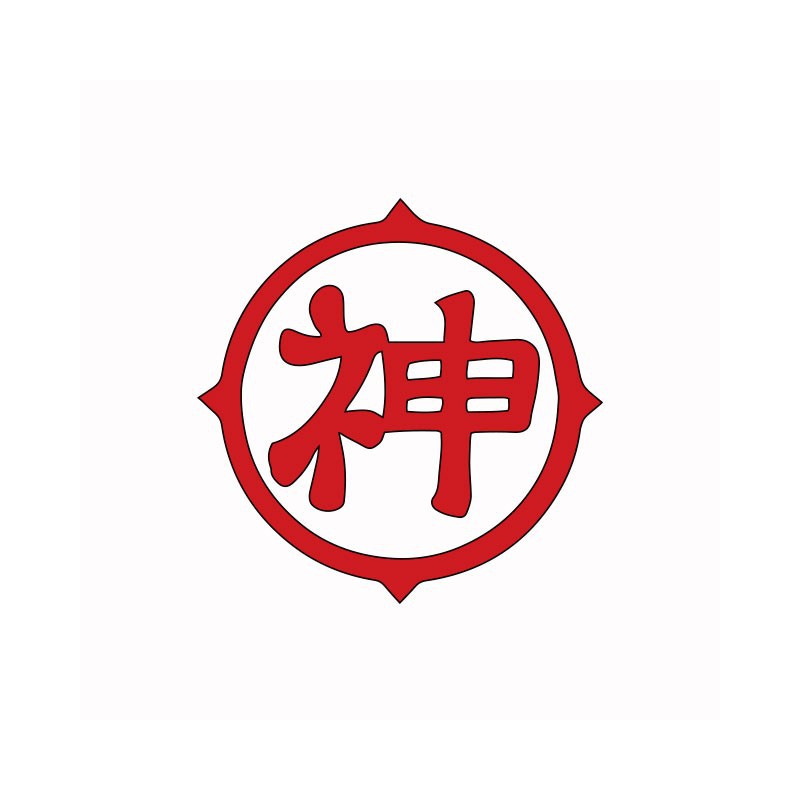

In the Nihon Shoki, the god is mainly referred to as Ō(a)namuchi-no-Kami ( 大己貴神 ( おお(あ)なむちのかみ ) hist. Ōkuninushi was popularly conflated with the deity Daikokuten (pictured) orthography: いづものおほかみ, OJ: Idumo 1-no 2-Opokami 2) – Used in an anecdote in the annals of Emperor Suinin Yachihoko-no-Kami ( 八千矛神 ( やちほこのかみ ), "Eight Thousand Spears" OJ: Yatipoko 2) – Used exclusively in the story of Ōkuninushi wooing Nunakawahime of Koshi.Utsushikunitama-no-Kami ( 宇都志国玉神 ( うつしくにたまのかみ ), "Spirit ( tama) of the Living Land" / "Living Spirit of the Land" OJ: Utusikunitama) – Another name bestowed by Susanoo.orthography: おほくにぬし Ohokuninushi OJ: Opokuninusi) – One of two new names later given to Ōnamuji by Susanoo used as the god's default name in the subsequent narrative Ōkuninushi-no-Kami ( 大国主神 ( おおくにぬしのかみ ), "Master of the Great Land" / "Great Master of the Land" hist.orthography: あしはらしこを OJ: Asipara-Siko 2wo) – Used in three instances in the narrative proper Ashihara-Shikoo ( 葦原色許男 ( あしはらしこお ), "Ugly Man / Young Warrior of the Reed Plains" hist.Ō(a)namuji-no-Kami ( 大穴牟遅神 ( おお(あ)なむぢのかみ ) historical orthography: おほ(あ)なむぢ Oho(a)namuji Old Japanese: Opo(a)namudi) – The god's original name.Ōkuninushi is referred to by the following names in the Kojiki: He was also syncretized with the deity Daikokuten ( Mahākāla, the Buddhist version of the god Shiva) under the synthesis of Buddhism and Shinto prevalent before the Meiji period. The sectarian group Izumo Taishakyō based in this shrine considers Ōkuninushi as its central deity and main focus of worship.

He is enshrined in many Shinto shrines throughout Japan, with the Grand Shrine of Izumo (Izumo Ōyashiro / Izumo Taisha) in Shimane being the most famous and preeminent of these. He is also known for his romantic escapades with a number of goddesses which resulted in many divine offspring, including the gods Kotoshironushi and Takeminakata. Myths which feature Ōkuninushi (or deities equated with him) are also found in the Fudoki of other provinces such as those of Harima (modern southwestern Hyōgo Prefecture). Aside from the Kojiki and the Shoki, the imperially-commissioned gazetteer report ( Fudoki) of this province dating from the early 7th century contain many myths concerning Ōkuninushi (there named 'Ōanamochi') and related deities. Ōkuninushi is closely associated with the province of Izumo (modern Shimane Prefecture) in western Japan indeed, the myth of his surrender to the gods of heaven may reflect the subjugation and absorption of this area by the Yamato court based in what is now Nara Prefecture. Amaterasu's grandson Ninigi then came down from heaven to govern Ashihara no Nakatsukuni and eventually became the ancestor of the Japanese imperial line. When the heavenly deities ( amatsukami) headed by Amaterasu demanded that he relinquish his rule over the land, Ōkuninushi agreed to their terms and withdrew into the unseen world (幽世, kakuriyo), which was given to him to rule over in exchange. In these texts, Ōkuninushi (Ōnamuchi) is portrayed as the head of the kunitsukami, the gods of the earth, and the original ruler of the terrestrial world, named Ashihara no Nakatsukuni (葦原中国, the "Central Land of Reed Plains"). 712 CE) and the Nihon Shoki (720 CE) alongside the sun goddess Amaterasu and her brother, the wild god Susanoo, who is reckoned to be either Ōkuninushi's distant ancestor or father. He is one of the central deities in the cycle of myths recorded in the Kojiki ( c. Ōkuninushi ( historical orthography: Ohokuninushi), also known as Ō(a)namuchi ( Oho(a)namuchi) or Ō(a)namochi ( Oho(a)namochi) among other variants, is a kami in Japanese mythology. Kinomata (Kimata), Shitateruhime, Ajisukitakahikone, Kotoshironushi, Takeminakata and others

Yagamihime, Suseribime, Nunakawahime, Takiribime, Kamuyatatehime, Torimimi (Totori), and others Susanoo-no-Mikoto and Kushinadahime ( Nihon Shoki) Kojiki, Nihon Shoki, Izumo Fudoki and othersĪme-no-Fuyukinu and Sashikuniwakahime ( Kojiki) Ōkuninushi (right) and Sukunabikona (left)


 0 kommentar(er)
0 kommentar(er)
